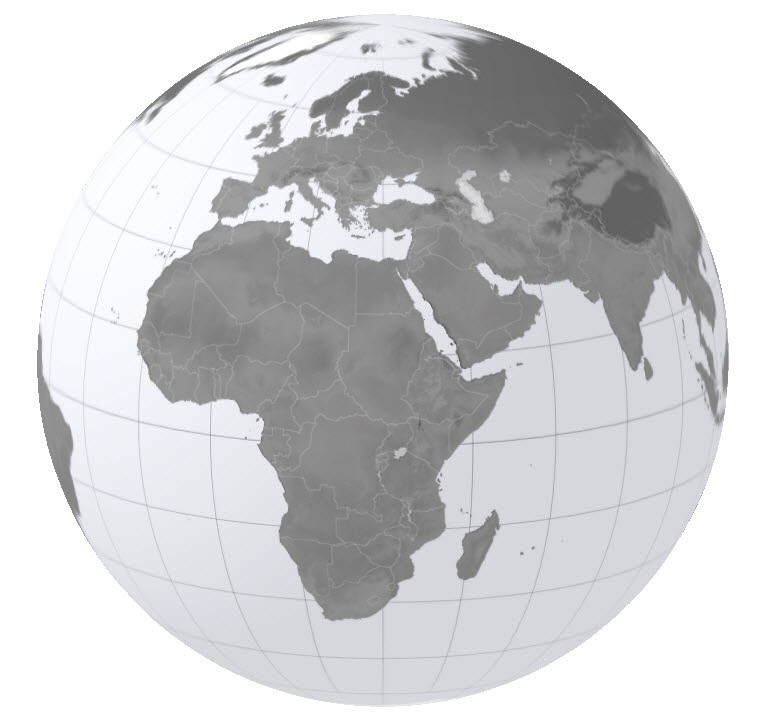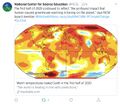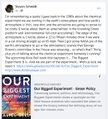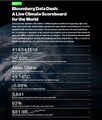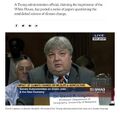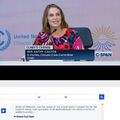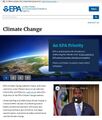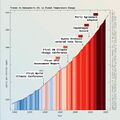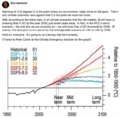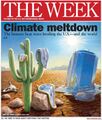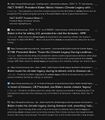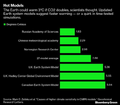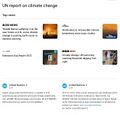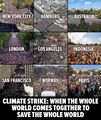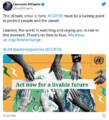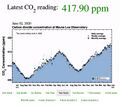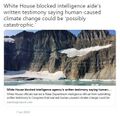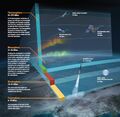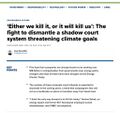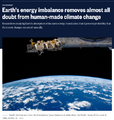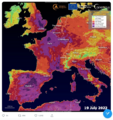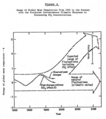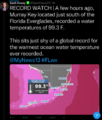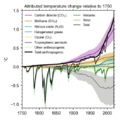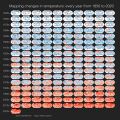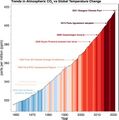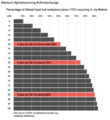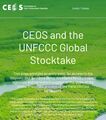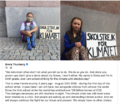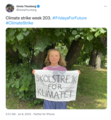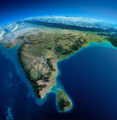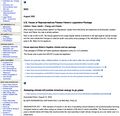Category:Climate Migration: Difference between revisions
Siterunner (talk | contribs) No edit summary |
Siterunner (talk | contribs) No edit summary |
||
| (12 intermediate revisions by the same user not shown) | |||
| Line 2: | Line 2: | ||
[[File:Featured.png]] | [[File:Featured.png]] | ||
:<big>2023</big> | |||
:<big><big>'''[[Sea-Level Rise]]'''</big></big> | |||
[[File:Rising seas threaten ‘mass exodus on a biblical scale’, UN chief warns Se...ardian.png]] | |||
<big>'''Rising Seas threaten 'mass exodus' on a 'biblical scale''''</big> | |||
* https://www.theguardian.com/environment/2023/feb/14/rising-seas-threaten-mass-exodus-on-a-biblical-scale-un-chief-warns | |||
''An increase in the pace at which sea levels are rising threatens “a mass exodus of entire populations on a biblical scale”, the UN secretary general has warned. | |||
''The climate crisis is causing sea levels to rise faster than for 3,000 years, bringing a “torrent of trouble” to almost a billion people, from London to Los Angeles and Bangkok to Buenos Aires, António Guterres said on Tuesday. Some nations could cease to exist, drowned under the waves, he said. | |||
''Addressing the UN security council, Guterres said slashing carbon emissions, addressing problems such as poverty that worsen the impact of the rising seas on communities and developing new international laws to protect those made homeless – and even stateless – were all needed. He said sea level rise was a threat-multiplier which, by damaging lives, economies and infrastructure, had “dramatic implications” for global peace and security. | |||
''Significant sea level rise is already inevitable with current levels of global heating, but the consequences of failing to tackle the problem are “unthinkable”. Guterres said: “Low-lying communities and entire countries could disappear for ever. We would witness a mass exodus of entire populations on a biblical scale. And we would see ever fiercer competition for fresh water, land and other resources...'' | |||
🌎 | |||
2022 | |||
'''''Map of Hope and Sorrow''''' | |||
* https://www.youtube.com/watch?v=HcatRU0OxuE&t=23s | |||
* https://www.amazon.com/Map-Hope-Sorrow-Stories-Refugees/dp/1804440019/ref=sr_1_1 | |||
''Award-winning author Helen Benedict and Syrian writer and refugee Eyad Awwadawnan team up to present the intimate stories of refugees from the Middle East and Africa who fled violence or persecution only to become trapped in some of the world’s worst refugee camps in Greece. Both authors spent years getting to know the interviewees and winning their trust. The result is five powerful stories of resilience, suffering and hope. Hasan, Asmahan, Evans, Mursal and Calvin each tell their story in their own words, retaining control and dignity, while revealing intimate and heartfelt scenes from their lives. They describe their homes and families in Syria, Nigeria, Afghanistan or Cameroon; their arduous journeys of escape; and recount how they ended up trapped in the Europe they believed would give them freedom, only to be abused and reviled.'' | |||
○ | |||
<big><big>'''''Where We'll End Up Living as the Planet Burns'''''</big></big> | |||
By [https://www.amazon.com/Gaia-Vince/e/B00ML5ZBKG Gaia Vince] | |||
* https://time.com/6209432/climate-change-where-we-will-live/ | |||
* https://www.massnews.com/where-well-end-up-living-as-the-planet-burns/ | |||
Adapted from Gaia Vince’s new book '''NOMAD CENTURY: How Climate Migration Will Reshape Our World''', published by Flatiron Books (August 2022) | |||
* https://www.amazon.com/Nomad-Century-Climate-Migration-Reshape/dp/1250821614 | |||
''While nations are trying to cut their carbon emissions and adapt to warmer climates, the elephant in the room is that for large parts of the globe, the local conditions are too extreme. There is no other way of adapting. To survive, people will need to relocate.'' | |||
''The next 50 years will see increased heat, combined with greater humidity, make huge swathes worldwide uninhabitable. Massive numbers will have to flee from the tropics, coasts, and former arable lands. You will either be one of them or they will give you housing. This migration has already begun—we have all seen the streams of people fleeing drought-hit areas in Latin America, Africa, and Asia where farming and other rural livelihoods have become impossible.'' | |||
''Over the past decade, global migration has increased by two-thirds. The issue of dealing with the rapidly rising number of refugees will be more important as the earth heats.'' | |||
''We can—and we must—prepare. A radical plan to ensure humanity’s survival in a hotter world involves building new large cities to the far north and abandoning vast areas of the unsustainable tropics. This involves adapting food, energy and infrastructure to the changing environment. As billions are forced from their homes, they will need new housing.'' | |||
''Cooperating like never before is our best chance of success: dissociating the political map and geography. It may sound absurd, but we must look at the world from a new perspective and create plans that are based on geography, ecology, and geology. In other words: identify the areas with the greatest freshwater supply, safe temperatures, solar energy sources, and plan for population growth, food, and energy production. The good news is, there’s plenty of room on Earth...'' | |||
🌎 | |||
<big><big>'''Climate Refugees, Climate-Related Migrants'''</big></big> | <big><big>'''Climate Refugees, Climate-Related Migrants'''</big></big> | ||
By 2050 over one billion people are at threat of being displaced | : '''By 2050 over one billion people are at threat of being displaced''' | ||
Drought, war, civil violence, economic disruption -- the costs of climate change are coming into view | :: '''Drought, war, civil violence, economic disruption -- the costs of climate change are coming into view''' | ||
| Line 16: | Line 88: | ||
''The United Nations High Commissioner for Refugees (UNHCR) [https://www.prnewswire.com/ae/news-releases/iep-over-one-billion-people-at-threat-of-being-displaced-by-2050-due-to-environmental-change-conflict-and-civil-unrest-301125350.html '''has | ''The United Nations High Commissioner for Refugees (UNHCR) [https://www.prnewswire.com/ae/news-releases/iep-over-one-billion-people-at-threat-of-being-displaced-by-2050-due-to-environmental-change-conflict-and-civil-unrest-301125350.html '''has issued warnings'''], “Urgent steps needed now to mitigate climate impact on displaced people”. They continued: “The climate crisis is a human crisis. It is driving displacement and makes life harder for those already forced to flee.”'' | ||
| Line 31: | Line 103: | ||
(2020) | (2020) | ||
The Institute for Economics and Peace (2020): Over one billion people at threat of being displaced by 2050 due to environmental change, conflict and civil unrest. | |||
'''Climate crisis could displace 1.2bn people by 2050, report warns''' | |||
* https://www.theguardian.com/environment/2020/sep/09/climate-crisis-could-displace-12bn-people-by-2050-report-warns | |||
The Institute for Economics and Peace (2020): '''Over one billion people are at threat of being displaced by 2050 due to environmental change, conflict and civil unrest.''' | |||
* https://www.prnewswire.com/ae/news-releases/iep-over-one-billion-people-at-threat-of-being-displaced-by-2050-due-to-environmental-change-conflict-and-civil-unrest-301125350.html | * https://www.prnewswire.com/ae/news-releases/iep-over-one-billion-people-at-threat-of-being-displaced-by-2050-due-to-environmental-change-conflict-and-civil-unrest-301125350.html | ||
'''''The Ecological Threat Register | '''''The Ecological Threat Register measures ecological threats countries are currently facing and provides projections to 2050. The report combines measures of resilience with the most comprehensive ecological data available, to shed light on the countries least likely to cope with extreme ecological shocks.''''' | ||
''Key results'' | ''Key results'' | ||
| Line 58: | Line 136: | ||
<big>'''Visions of Humanity'''</big> | <big>'''Visions of Humanity'''</big> | ||
A composite index measuring the impact of ecological threats to countries made up of 5 qualitative indicators each weighed on a scale of 1-5. The higher the score, the more at risk the country. | A composite index measuring the impact of ecological threats to countries made up of 5 qualitative indicators each weighed on a scale of 1-5. The higher the score, the more at risk the country. | ||
| Line 105: | Line 181: | ||
''Climate change will transform more than 143 million people into “climate migrants” (#ClimateMigration) escaping crop failure, water scarcity, and sea-level rise, a new World Bank report concludes.'' | ''Climate change will soon transform more than 143 million people into “climate migrants” (#ClimateMigration) escaping crop failure, water scarcity, and sea-level rise, a new World Bank report concludes.'' | ||
''Most of this population shift will take place in Sub-Saharan Africa, South Asia, and Latin America—three “hot spots” that represent 55 percent of the developing world’s populations.'' | ''Most of this population shift will take place in Sub-Saharan Africa, South Asia, and Latin America—three “hot spots” that represent 55 percent of the developing world’s populations.'' | ||
Latest revision as of 20:16, 15 February 2023
<addthis />
- 2023
Rising Seas threaten 'mass exodus' on a 'biblical scale'
An increase in the pace at which sea levels are rising threatens “a mass exodus of entire populations on a biblical scale”, the UN secretary general has warned.
The climate crisis is causing sea levels to rise faster than for 3,000 years, bringing a “torrent of trouble” to almost a billion people, from London to Los Angeles and Bangkok to Buenos Aires, António Guterres said on Tuesday. Some nations could cease to exist, drowned under the waves, he said.
Addressing the UN security council, Guterres said slashing carbon emissions, addressing problems such as poverty that worsen the impact of the rising seas on communities and developing new international laws to protect those made homeless – and even stateless – were all needed. He said sea level rise was a threat-multiplier which, by damaging lives, economies and infrastructure, had “dramatic implications” for global peace and security.
Significant sea level rise is already inevitable with current levels of global heating, but the consequences of failing to tackle the problem are “unthinkable”. Guterres said: “Low-lying communities and entire countries could disappear for ever. We would witness a mass exodus of entire populations on a biblical scale. And we would see ever fiercer competition for fresh water, land and other resources...
🌎
2022
Map of Hope and Sorrow
Award-winning author Helen Benedict and Syrian writer and refugee Eyad Awwadawnan team up to present the intimate stories of refugees from the Middle East and Africa who fled violence or persecution only to become trapped in some of the world’s worst refugee camps in Greece. Both authors spent years getting to know the interviewees and winning their trust. The result is five powerful stories of resilience, suffering and hope. Hasan, Asmahan, Evans, Mursal and Calvin each tell their story in their own words, retaining control and dignity, while revealing intimate and heartfelt scenes from their lives. They describe their homes and families in Syria, Nigeria, Afghanistan or Cameroon; their arduous journeys of escape; and recount how they ended up trapped in the Europe they believed would give them freedom, only to be abused and reviled.
○
Where We'll End Up Living as the Planet Burns
By Gaia Vince
Adapted from Gaia Vince’s new book NOMAD CENTURY: How Climate Migration Will Reshape Our World, published by Flatiron Books (August 2022)
While nations are trying to cut their carbon emissions and adapt to warmer climates, the elephant in the room is that for large parts of the globe, the local conditions are too extreme. There is no other way of adapting. To survive, people will need to relocate.
The next 50 years will see increased heat, combined with greater humidity, make huge swathes worldwide uninhabitable. Massive numbers will have to flee from the tropics, coasts, and former arable lands. You will either be one of them or they will give you housing. This migration has already begun—we have all seen the streams of people fleeing drought-hit areas in Latin America, Africa, and Asia where farming and other rural livelihoods have become impossible.
Over the past decade, global migration has increased by two-thirds. The issue of dealing with the rapidly rising number of refugees will be more important as the earth heats.
We can—and we must—prepare. A radical plan to ensure humanity’s survival in a hotter world involves building new large cities to the far north and abandoning vast areas of the unsustainable tropics. This involves adapting food, energy and infrastructure to the changing environment. As billions are forced from their homes, they will need new housing.
Cooperating like never before is our best chance of success: dissociating the political map and geography. It may sound absurd, but we must look at the world from a new perspective and create plans that are based on geography, ecology, and geology. In other words: identify the areas with the greatest freshwater supply, safe temperatures, solar energy sources, and plan for population growth, food, and energy production. The good news is, there’s plenty of room on Earth...
🌎
Climate Refugees, Climate-Related Migrants
- By 2050 over one billion people are at threat of being displaced
- Drought, war, civil violence, economic disruption -- the costs of climate change are coming into view
Climate change is the defining crisis of our time and disaster displacement one of its most devastating consequences. Entire populations are already suffering the impacts, but vulnerable people living in some of the most fragile and conflict-affected countries are often disproportionately affected.
Refugees, internally displaced people (IDPs) and the stateless are on the frontlines of the climate emergency. Many are living in climate “hotspots”, where they typically lack the resources to adapt to an increasingly hostile environment.
The United Nations High Commissioner for Refugees (UNHCR) has issued warnings, “Urgent steps needed now to mitigate climate impact on displaced people”. They continued: “The climate crisis is a human crisis. It is driving displacement and makes life harder for those already forced to flee.”
UN Global Refugees Social Media Accounts
(2020)
Climate crisis could displace 1.2bn people by 2050, report warns
The Institute for Economics and Peace (2020): Over one billion people are at threat of being displaced by 2050 due to environmental change, conflict and civil unrest.
The Ecological Threat Register measures ecological threats countries are currently facing and provides projections to 2050. The report combines measures of resilience with the most comprehensive ecological data available, to shed light on the countries least likely to cope with extreme ecological shocks.
Key results
- 19 countries with the highest number of ecological threats are among the world's 40 least peaceful countries including Afghanistan, Syria, Iraq, Chad, India and Pakistan.
- Over one billion people live in 31 countries where the country's resilience is unlikely to sufficiently withstand the impact of ecological events by 2050, contributing to mass population displacement.
- Sub-Saharan Africa, South Asia, the Middle East and North Africa are the regions facing the largest number of ecological threats.
- By 2040, a total of 5.4 billion people – more than half of the world's projected population – will live in the 59 countries experiencing high or extreme water stress, including India and China.
- 3.5 billion people could suffer from food insecurity by 2050; which is an increase of 1.5 billion people from today.
- The lack of resilience in countries covered in the ETR will lead to worsening food insecurity and competition over resources, increasing civil unrest and mass displacement, exposing developed countries to increased influxes of refugees.
🌎
Visions of Humanity
A composite index measuring the impact of ecological threats to countries made up of 5 qualitative indicators each weighed on a scale of 1-5. The higher the score, the more at risk the country.
The second edition of the Ecological Threat Report (ETR), which analyses 178 independent states and territories. Produced by the Institute for Economics and Peace (IEP), the report covers over 2,500 sub- national administrative units or 99.9% of the world’s population.
🌎
Climate refugee or climate migrant?
- https://yorkshirebylines.co.uk/news/environment/climate-migration-and-climate-change/ Via Yorkshire Bylines]
The terms refugee and migrant have been repeatedly used as political weapons by various political parties and governments, and the connotations of these labels can be contentious. The term ‘refugee’, according to the 1951 UN Convention Relating to the State of Refugees, is “someone who is unable or unwilling to return to their country of origin owing to a well-founded fear of being persecuted for reasons of race, religion, nationality, membership of a particular social group, or political opinion”.
The Intergovernmental Panel on Climate Change (IPCC) warns that language is important in order to offer legal protection to individuals. They caution that:
“This is not just semantics—which definition becomes generally accepted will have very real implications for the obligations of the international community under international law. Forced climate migrants fall through the cracks of international refugee and immigration policy—and there is considerable resistance to the idea of expanding the definition of political refugees to incorporate climate ‘refugees’. The term ‘climate migrant’ can also be a loaded term, with the implication that the ‘pull’ of the destination rather than the ‘push’ of the original country is the primary factor for an individual to move.”
In its conclusion, they note that formal recognition is the critical first step.
“Meanwhile, large-scale migration is not taken into account in national adaptation strategies which tend to see migration as a ‘failure of adaptation’. The international community needs to acknowledge formally the predicament of forced climate migrants.”
The IPCC also highlight that numbers of displaced persons may be significantly under-counted owing to large-scale displacement within countries. “Given that the majority of people displaced by climate change will likely stay within their own borders, restricting the definition to those who cross international borders may seriously understate the extent of the problem”. National borders may seriously understate the extent of the problem”.
...with the lack of a secure definition under international law, climate migrants can fall between the cracks in asylum law, with no institution or country responsible for providing them with basic services. This, in turn, has the potential to be the biggest humanitarian disaster ever recorded – with hundreds of millions of people at risk of climate displacement.
🌎
Millions of People May Soon Become Climate Migrants
Climate change will drive human migration more than other events, a new report warns. But the worst impacts can be avoided.
National Geographic / World Bank / March 2018
Climate change will soon transform more than 143 million people into “climate migrants” (#ClimateMigration) escaping crop failure, water scarcity, and sea-level rise, a new World Bank report concludes.
Most of this population shift will take place in Sub-Saharan Africa, South Asia, and Latin America—three “hot spots” that represent 55 percent of the developing world’s populations.
The report, Groundswell—Preparing for Internal Climate Migration, also shifts the focus from cross-border migration, which has drawn global attention as refugees and migrants flee war, poverty and oppression, to in-country migration, which involves many more millions of people on the move in search of viable places to live.
○
Pages in category "Climate Migration"
The following 20 pages are in this category, out of 20 total.
C
E
G
Media in category "Climate Migration"
The following 200 files are in this category, out of 401 total.
(previous page) (next page)- 2015 temp-report s.jpg 399 × 224; 35 KB
- 2020 record temperatures.png 800 × 502; 358 KB
- 7-20-2020 GreenPolicy360 RT No.2.jpg 591 × 510; 125 KB
- A scorching year, what about the 360 warming data.jpg 600 × 706; 106 KB
- About website of The Invading Sea.png 800 × 343; 126 KB
- Acceptance on behalf of the United States of America.png 448 × 306; 62 KB
- Act now for a livable future.png 501 × 275; 272 KB
- Ag production and GHG emissions.jpg 680 × 510; 33 KB
- Amazon fires burn across the rainforest.jpg 800 × 504; 76 KB
- Andrew Wheeler confirmed to head EPA.jpg 753 × 600; 85 KB
- Antarctica science - warming water, shrinking ice.png 640 × 356; 174 KB
- Antarctica-2018.jpg 768 × 1,024; 82 KB
- AOC re climate task force - july 8 2020.jpg 585 × 203; 38 KB
- Arctic 30.1 C at 62.5 N.jpg 800 × 432; 80 KB
- Arctic heat in Russia-Siberia 2020.gif 784 × 408; 3.6 MB
- Arctic-March30,2019.jpg 797 × 600; 126 KB
- Arctic-Siberia-6-20-2020.jpg 478 × 644; 148 KB
- Atmosphere Science.jpg 800 × 600; 45 KB
- Atmospheric Experiment of Humanity.jpg 519 × 574; 201 KB
- AU Too Hot.png 640 × 413; 286 KB
- Banking - finance - climate - Mann-1.jpg 452 × 640; 162 KB
- Banking - finance - climate - Mann-2.jpg 452 × 640; 164 KB
- Biden introduces leadership team - Nov 24 2020.jpg 800 × 644; 173 KB
- Biden selects Kerry as special climate envoy.jpg 592 × 505; 87 KB
- Biden urged to act - Oct 18 2021 - The Guardian.png 663 × 600; 497 KB
- Biden's assembled an all-star climate team 4-21-2021.jpg 682 × 732; 309 KB
- Biden-Sanders Unity Task Force on Climate.jpg 701 × 780; 139 KB
- Big Oil Rocked by News May 27 2021.jpg 639 × 600; 84 KB
- Bill Nelson on Global Temp Rise and Climate Change.png 640 × 353; 100 KB
- Bill Nye The Planet's on Fire.jpg 800 × 675; 106 KB
- Bloomberg Carbon Clock 10-26-2021 8-47-05 AM EST.png 800 × 195; 356 KB
- Bloomberg Live Climate Data Dashboard.jpg 640 × 756; 156 KB
- Breakpoint - Reckoning with America's Environmental Crisis.jpg 329 × 500; 49 KB
- Bridenstine talks.png 1,485 × 911; 223 KB
- Burst of climate denial as Trump presidency ends.jpg 632 × 604; 92 KB
- Car heating and cooling.png 465 × 635; 261 KB
- Carbon Brief - Greenhouse gas levels 2021.png 640 × 436; 292 KB
- Caribbean Sea hot - June night 2024.png 676 × 600; 386 KB
- CFSV2 world temp July 3, 2023.png 600 × 800; 513 KB
- CH4 graph - 1980-2020.JPG 640 × 446; 22 KB
- Changes in carbon dioxide per 1000 years - via Climate Central.jpg 682 × 424; 34 KB
- China Record Heat - August 2022.png 800 × 1,343; 812 KB
- Citizens Climate Lobby - Tampa Bay.jpg 586 × 515; 125 KB
- Climate Action 25th conf in Madrid.jpg 680 × 510; 22 KB
- Climate activist - Steven Schmidt - 1978 on.png 600 × 480; 174 KB
- Climate Books - 2020.jpg 800 × 450; 69 KB
- Climate Change COP27 - Nov 11 2022 US Representatives.jpg 712 × 444; 54 KB
- Climate Change COP27 - Nov 11 Kathy Castor.jpg 712 × 710; 77 KB
- Climate Change US EPA.jpg 600 × 703; 95 KB
- Climate Conferences 1979-2020.jpg 768 × 768; 121 KB
- Climate Crisis - Emily Atkin Heated No. 1.jpg 537 × 453; 61 KB
- Climate Crisis and the Global Green New Deal.jpg 293 × 418; 33 KB
- Climate debate.jpg 493 × 580; 129 KB
- Climate Desk.jpg 390 × 226; 21 KB
- Climate diplomacy is failing - June 2020.jpg 592 × 440; 71 KB
- Climate Emergency Institute - Oct 2022.png 610 × 600; 274 KB
- Climate Emergency Institute -- 2021.jpg 800 × 450; 55 KB
- Climate emergency.jpg 800 × 450; 69 KB
- Climate Headline News around the World - July 2023.jpg 600 × 704; 151 KB
- Climate Lawsuit-Our Childrens Trust-Florida.png 462 × 760; 289 KB
- Climate Legacy of Biden.jpg 600 × 687; 265 KB
- Climate Migration Interactive Map.jpg 766 × 719; 58 KB
- Climate Models.png 639 × 558; 123 KB
- Climate News - Oct 28 2022.jpg 626 × 600; 88 KB
- Climate News - United Nations Report - Feb 2022.png 768 × 878; 539 KB
- Climate News Dec 4 2023 in Dubai.png 800 × 1,037; 649 KB
- Climate Plans Enforcement - Resources - GreenPolicy.png 768 × 897; 686 KB
- Climate poll - Florida.png 640 × 267; 36 KB
- Climate strike - Week 171.png 739 × 600; 834 KB
- Climate Strike Around the World - Sep20,2019.jpg 700 × 830; 119 KB
- Climate Summit - Leonardo DiCaprio.png 600 × 663; 521 KB
- Climate Summit live updates - Nov 2 2021.png 751 × 600; 420 KB
- Climate Summit planned-1.jpg 800 × 301; 53 KB
- Climate Summit planned-2.jpg 800 × 187; 31 KB
- Climate Summit planned-3.jpg 800 × 278; 44 KB
- Climate Summit planned-4.jpg 800 × 241; 41 KB
- Climate usa 60 years on.jpg 800 × 480; 34 KB
- ClimateNewsFlorida.jpg 448 × 191; 36 KB
- CO2 at Mauna Loa data - June 02, 2020 - 417.90 ppm.jpg 640 × 566; 66 KB
- CO2 cumulative emissions 1850 - 2021 - countries.jpg 640 × 462; 211 KB
- CO2 Emissions per Capita by Country 1960-2014.png 800 × 451; 424 KB
- CO2 emissions-around-the-world.png 800 × 595; 123 KB
- CO2 global pathways via IPCC AR6 - how will we respond.jpg 800 × 450; 57 KB
- COP26 Climate Summit concludes.jpg 600 × 800; 160 KB
- COP26 concludes - 2.png 648 × 467; 177 KB
- COP26 concludes - 3.png 648 × 713; 416 KB
- COP26 concludes.png 648 × 528; 329 KB
- COP26 in GLASGOW - 31 OCT-12 NOV 2021.jpg 800 × 264; 51 KB
- COP27 'opening speech'.png 640 × 460; 160 KB
- COP28 News - Dec 13 2023.png 800 × 898; 410 KB
- Coral bleaching - August 2023.png 488 × 430; 261 KB
- Coral bleaching - NOAA - August 2023.png 488 × 338; 201 KB
- Covering Climate Now.jpg 493 × 498; 67 KB
- Cradle of Civilization - and climate change.jpg 640 × 360; 70 KB
- Cumulative CO2 Emissions by Country Since 1850.png 800 × 445; 445 KB
- Dated record of Earths climate - Science Report Sept 10 2020.jpg 735 × 669; 192 KB
- Death Valley ... the heat, what its like.jpg 640 × 381; 62 KB
- Defend Our Future 6-1-2020.jpg 585 × 458; 103 KB
- Democratic Climate Plan-Introduced June 2020.jpg 528 × 561; 117 KB
- Democratic National Convention-62 climate speakers.jpg 443 × 407; 57 KB
- Democratic Party Climate Bill - Aug 2022.png 640 × 269; 70 KB
- Democratic Party pres candidates debate in Miami-June 2019.jpg 800 × 534; 124 KB
- Democratic presidential candidates on the Green New Deal.jpg 800 × 359; 57 KB
- Denying human-caused climate change.jpg 639 × 620; 129 KB
- Don't Look Up ....jpg 430 × 543; 172 KB
- Don't Look Up.jpg 800 × 450; 104 KB
- Donald Trump-Jair Bolsonaro-March 2019.jpg 640 × 455; 57 KB
- Earth Day 2021 - Climate Summit News-1.jpg 491 × 270; 127 KB
- Earth Day 50 years on.jpg 480 × 548; 107 KB
- Earth Summit 1992-s.png 336 × 418; 283 KB
- Earth Summit 1992.jpg 600 × 746; 171 KB
- Earth trapping unprecedented amount of heat - NASA.jpg 468 × 373; 56 KB
- Earth-upper-atmosphere-NASA.jpg 800 × 781; 327 KB
- EarthScience Missions via the EOS - 2022.png 800 × 219; 139 KB
- Economist.com global capital snapshot as of July 2020.jpg 800 × 477; 119 KB
- Elon Musk quote - gas externality price.png 680 × 320; 199 KB
- Emissions graph - gleick tw 2018.jpg 640 × 364; 37 KB
- End of coal power in UK - 1.jpg 800 × 868; 112 KB
- End of coal power in UK - 2.png 800 × 557; 225 KB
- End of coal power in UK - 3.png 800 × 562; 240 KB
- End of Coal Power in UK.png 800 × 925; 739 KB
- Energy Charter Treaty.jpg 512 × 480; 74 KB
- Energy Imbalance, Climate Change - Aug 1 2021.png 640 × 672; 394 KB
- Environmental laws in US - Supreme Court votes soon.png 800 × 414; 334 KB
- EPA website a 'ghost page' now.png 667 × 233; 45 KB
- ESA Living Planet Symposium - Announcement.png 637 × 600; 508 KB
- ESA Living Planet Symposium - May 2022.png 700 × 600; 258 KB
- ESG Fight - Feb 2023.png 396 × 194; 88 KB
- EU agrees to cut emissions 55 percent by 2030.jpg 800 × 558; 96 KB
- EU unveils new climate change policy - July 14 2021 - 1.jpg 800 × 234; 33 KB
- EU unveils new climate change policy - July 14 2021 - 2.jpg 800 × 552; 86 KB
- EU unveils new climate change policy - July 14 2021 - 3.jpg 800 × 549; 89 KB
- EU unveils new climate change policy - July 14 2021 - 4.jpg 800 × 550; 92 KB
- EU unveils new climate change policy - July 14 2021 - 5.jpg 800 × 548; 88 KB
- EU unveils new climate change policy - July 14 2021 - 6.jpg 800 × 557; 89 KB
- EU unveils new climate change policy - July 14 2021 - 7.jpg 800 × 553; 92 KB
- EU unveils new climate change policy - July 14 2021 - 8.jpg 800 × 589; 91 KB
- Europe heat wave - July 19 2022 - via Copernicus satellite.png 600 × 639; 704 KB
- Extreme temperature-world-May 2024.jpg 640 × 427; 105 KB
- ExxonMobil CO2 climatic response study - Graphic 1 - 1982.png 537 × 680; 150 KB
- ExxonMobil CO2 climatic response study - Graphic 2 - 1982.png 537 × 605; 112 KB
- Facts about US Energy Use.jpg 697 × 600; 101 KB
- Floating adaptations - GCA - for sea-level rise - circa 2023.png 600 × 732; 273 KB
- Flooding in South Florida.png 640 × 742; 293 KB
- Florida Keys sea surface temps for 2023 (as of July).png 480 × 585; 287 KB
- Florida ocean water temp south of Everglades tops 99 F. degrees.png 480 × 564; 128 KB
- Florida sea surface water in the Keys area tops 100 degree F.jpg 640 × 257; 58 KB
- From 1968 to 1992 -- and the Journey continues....png 572 × 851; 320 KB
- GCAS original.png 800 × 504; 94 KB
- GCAS-2.jpg 800 × 450; 136 KB
- GHG forcings 1750-2020.png 531 × 531; 94 KB
- GHG ppt concentrations 1975-2020.jpg 640 × 361; 69 KB
- Gistemp 1979-2019.png 750 × 491; 335 KB
- Glasgow-Climate Conference News-Nov 6, 2021.png 600 × 800; 290 KB
- Global Changes in temperature 1850-2020.jpg 480 × 480; 152 KB
- Global Climate Change textbook-Edition2.jpg 604 × 680; 96 KB
- Global climate conferences and GHG increases.jpg 793 × 801; 56 KB
- Global Climate Dashboard - NOAA - Climate.gov.png 630 × 480; 165 KB
- Global climate dashboard-NOAA climate.gov.jpg 521 × 221; 45 KB
- Global climate dashboard-www.climate.gov.jpg 800 × 489; 100 KB
- Global Climate Dashboard.jpg 800 × 529; 101 KB
- Global Climate Strike - RU.jpg 450 × 804; 116 KB
- Global fossil fuel emissions - in a lifetime graphic.png 600 × 657; 233 KB
- Global greenhouse gas emissions - 1980 - 2020.png 640 × 480; 158 KB
- Global Primary Energy Consumption - 1800-2017.jpg 800 × 583; 65 KB
- Global Stocktake, the first GST.jpg 800 × 905; 513 KB
- Global temperature change 1850-2016.gif 512 × 288; 1.38 MB
- Global temperature change 1901-2000.jpg 640 × 508; 47 KB
- Global temperature variations over past 200 years.jpg 640 × 360; 29 KB
- Global warming June 2024.jpg 640 × 174; 46 KB
- GlobalClimateStrike-March15,2019.jpg 600 × 613; 30 KB
- GND next steps.png 567 × 660; 304 KB
- Green New Deal, work in progress.jpg 800 × 450; 62 KB
- Greenhouse gas levels hit record - Reuters.jpg 600 × 696; 104 KB
- GreenPolicy360 - May-10-2024.png 790 × 694; 320 KB
- Greta - the politics thats needed.jpg 639 × 203; 38 KB
- Greta anger into action.png 800 × 419; 528 KB
- Greta Looks Back.PNG 504 × 437; 368 KB
- Greta outside the Swedish Parliament, August 2018.jpg 680 × 398; 78 KB
- Greta Thunberg - Week 203 Climate Strike Banner.png 209 × 127; 51 KB
- Greta Thunberg - Week 203 Climate Strike.png 554 × 601; 488 KB
- Gulf Stream in Critical Danger.pdf ; 181 KB
- Heat hitting billions.png 614 × 690; 509 KB
- Heat stress in US may double by end of century.jpg 640 × 503; 107 KB
- Heat Wave Asia - April May 2022.png 766 × 132; 25 KB
- Hindu Kush-Himalayas - 2023 Report on Dangerous Climate Impacts.png 800 × 819; 1,023 KB
- Historic climate-clean energy vote in US Congress August 12 2022.jpeg 800 × 775; 384 KB
- Historic gulf of mexico warm water.png 800 × 306; 148 KB
- Historic heat in gulf of mexico.png 800 × 810; 590 KB
- Historic photographs - Humble Oil TX - Exxon.png 591 × 596; 548 KB
- Hot weather and climate change ... in Houston.png 413 × 154; 16 KB


